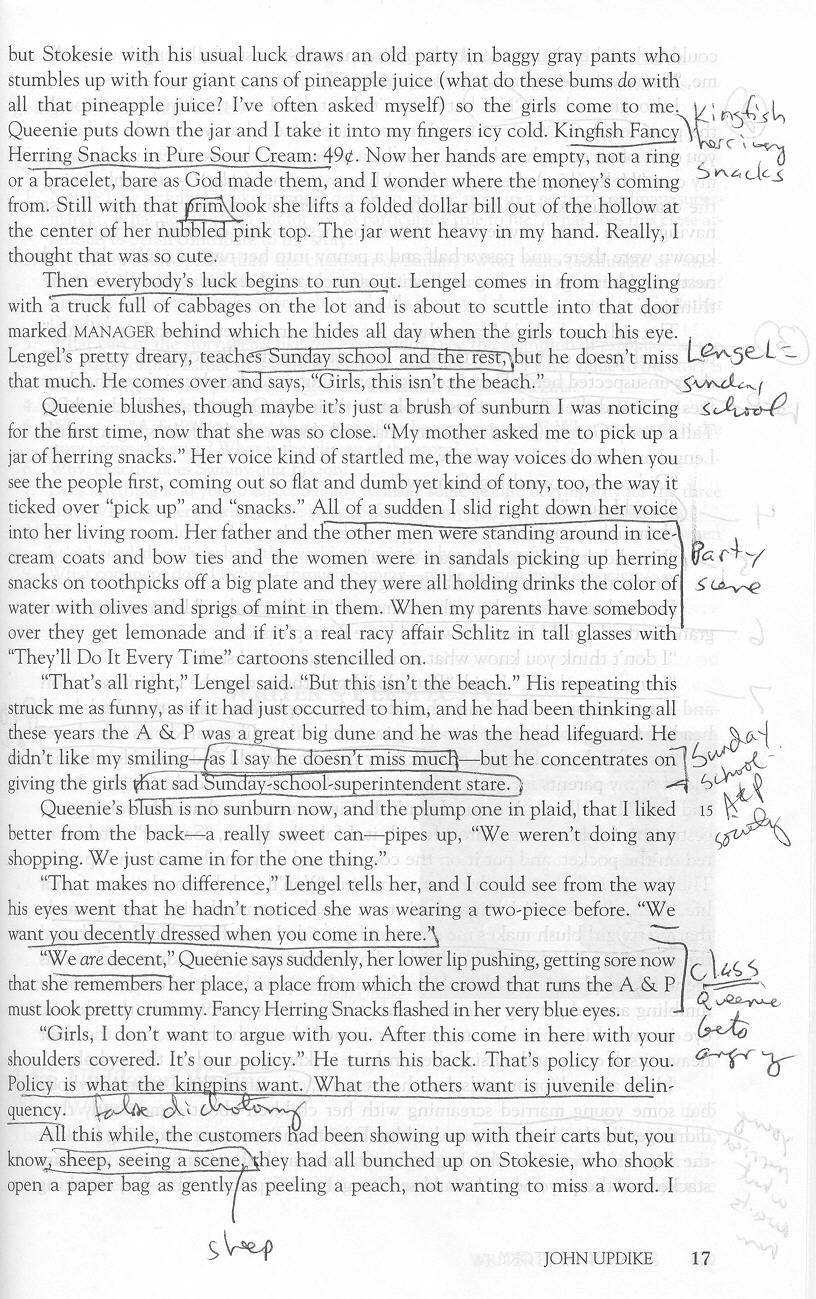
Annotation
A common question students ask is "What is annotation?" followed quickly by "How/What do I annotate?"
The first question is easy: annotation involves underlining, questioning, and taking notes directly on the page you're reading.
The second question, naturally, is not as easy to answer . . . .
In general, you should note words or images that seem particularly compelling or dialogue by a character that seems revealing. In both instances, the words or dialogue may not be especially vivid, but may have a heightened meaning given the context. Look for repetitious image patterns that the author develops or descriptions that seem important. Why, for instance, did the author use that detail? What would be the difference if another one was substituted? This gets you thinking about possible meanings.
How about we start with an example? Below you'll find a page from "A&P" that I've annotated.

Now of course I've read this story many, many times, read criticism on it, and taught it for years, so my comments will be different than yours, but you can see here two important parts of successful annotation: underlining and short notes. While many people underline what they consider important, it's crucial to jot a quick note to yourself explaining why you've underlined that text. I began doing this much more attentively after opening a book I hadn't read in a while, noticing that certain passages were underlined, and asking myself "Now why did I underline that?" This showed me that underlining or highlighting isn't enough: you need to talk back to the text, engage in a running commentary with the writer.
You may be saying "But I hate writing in a book -- it'll mess it up," or "Isn't it insulting to the writer to mark the page?" For the first objection, three words will suffice: get a pencil. For the second objection, ask yourself a question: would you want readers to just gloss over your words, or become so engaged that they have to talk back to you?